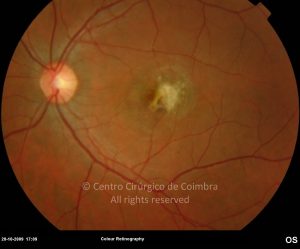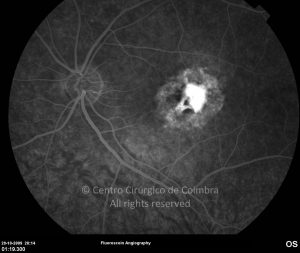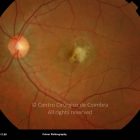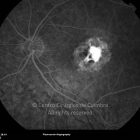Idiopathic Choroidal Neovascular have been found in a significant number of young and young adults, without an apparent cause.
Ultrastructural features of some excised submacular idiopathic neovascular membranes were similar to those observed in patients with Presumed Ocular Histoplasmosis Syndrome. Idiopathic NV membranes often occur in association with a pigment ring or gray mound in the fundus.
Patients may develop loss of central vision secondary to serous and hemorrhagic detachment of the macula caused by choroidal neovascularization.
There is no evidence of vitreous cells, condensation or vasculitis, or any systemic disease in this group of patients. The cause of these choroidal neovascular membranes remains unknown.
Differential Diagnosis
- Degenerative Myopia
- Angioid streaks
- ARMD, exudative
- Central serous chorioretinopathy (CSC)
- Presumed ocular histoplasmosis syndrome.









